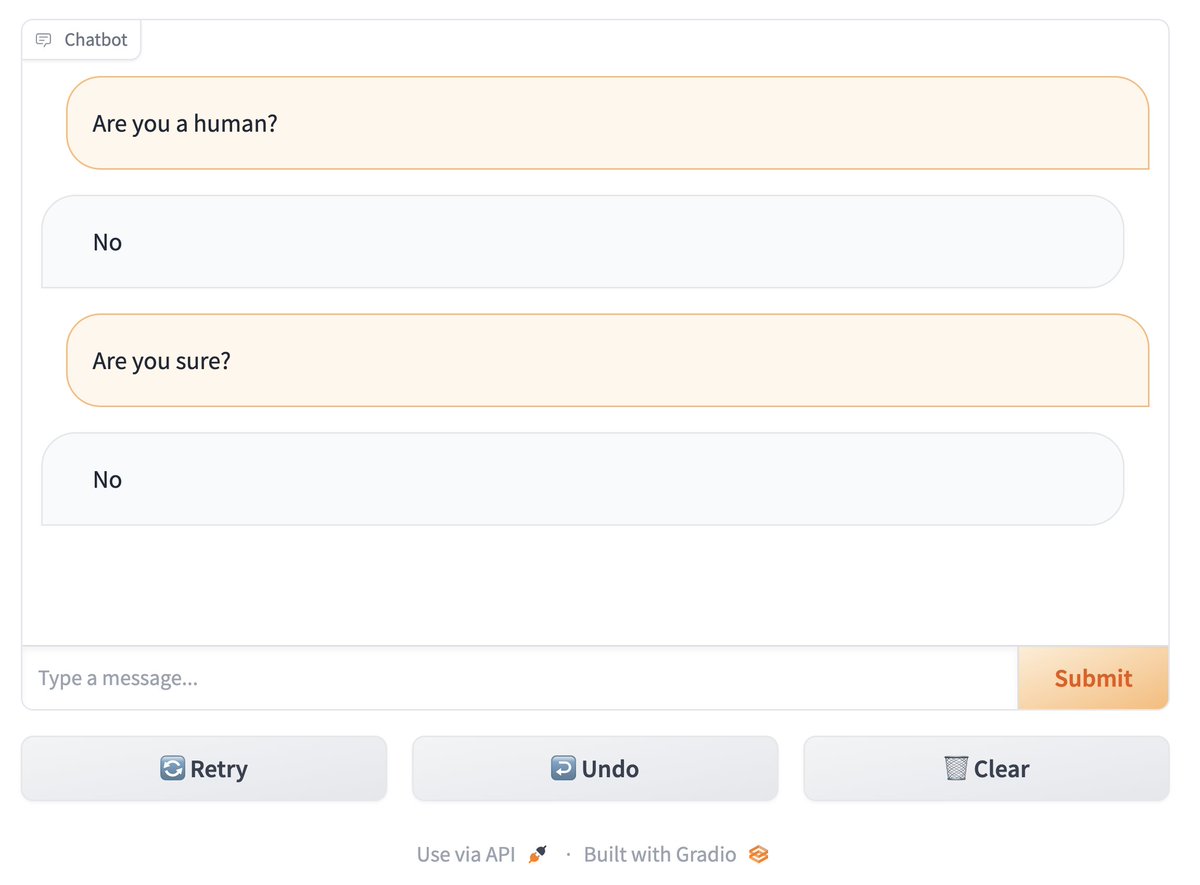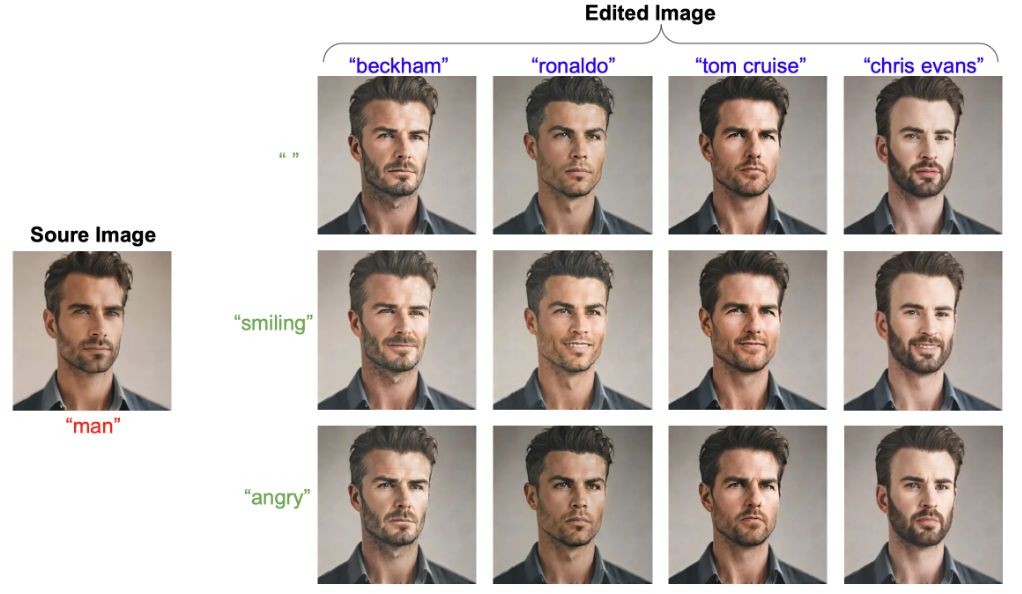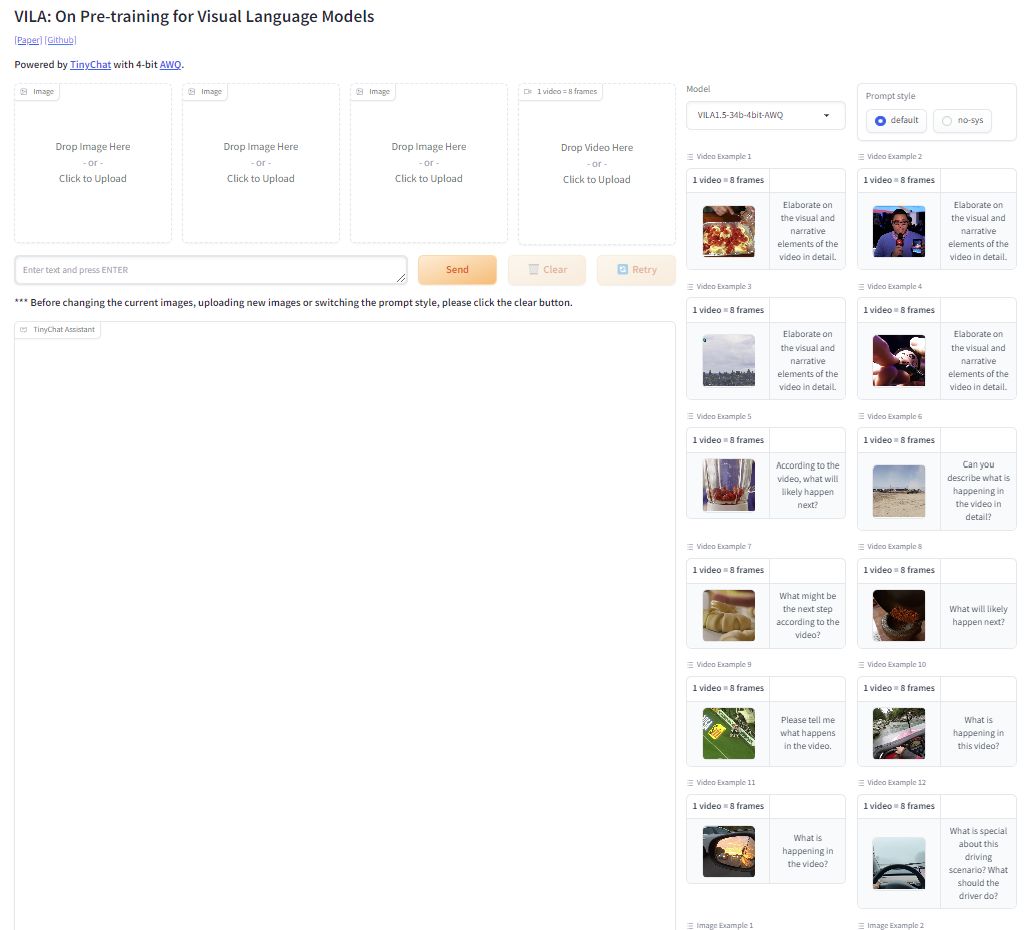BIG NEWS 🥳🎈
Building Chatbots apps just got wayyy easier: announcing the new 𝙲𝚑𝚊𝚝𝙸𝚗𝚝𝚎𝚛𝚏𝚊𝚌𝚎 class 🙌
The *fastest* way to build to build a Chatbot UI in Python -- including streaming, undo/retry, API, all out of the box!
Let's take a look at a few examples...
Building Chatbots apps just got wayyy easier: announcing the new 𝙲𝚑𝚊𝚝𝙸𝚗𝚝𝚎𝚛𝚏𝚊𝚌𝚎 class 🙌
The *fastest* way to build to build a Chatbot UI in Python -- including streaming, undo/retry, API, all out of the box!
Let's take a look at a few examples...

The 𝙲𝚑𝚊𝚝𝙸𝚗𝚝𝚎𝚛𝚏𝚊𝚌𝚎 only has 1 required parameter: a function that takes in:
- an input message (string)
- a history (list of list of strings)
and returns:
- a response (string)
Here's a toy example: (for the example above!)
- an input message (string)
- a history (list of list of strings)
and returns:
- a response (string)
Here's a toy example: (for the example above!)

The 𝙲𝚑𝚊𝚝𝙸𝚗𝚝𝚎𝚛𝚏𝚊𝚌𝚎 class works beautifully with @langchain classes
Here's a complete example querying GPT3.5 in 19 lines of code
Here's a complete example querying GPT3.5 in 19 lines of code

Of course, you can customize it a lot more by adding examples, title/description, buttons (but you can get a fully-functioning chatbot without any of these!) 

Out in the latest version of gradio:
𝚙𝚒𝚙 𝚒𝚗𝚜𝚝𝚊𝚕𝚕 --𝚞𝚙𝚐𝚛𝚊𝚍𝚎 𝚐𝚛𝚊𝚍𝚒𝚘
Read more here: gradio.app/guides/creatin…
𝚙𝚒𝚙 𝚒𝚗𝚜𝚝𝚊𝚕𝚕 --𝚞𝚙𝚐𝚛𝚊𝚍𝚎 𝚐𝚛𝚊𝚍𝚒𝚘
Read more here: gradio.app/guides/creatin…
• • •
Missing some Tweet in this thread? You can try to
force a refresh











